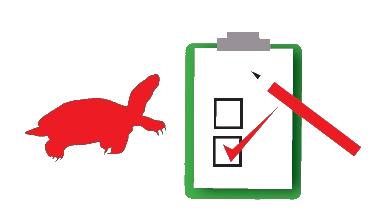Risk Assessment of Alien Species
Conducting risk assessment is the important first step to effectively manage IAS because it provides an objective way to identify high-risk species requiring priority treatment (i.e. target IAS). The Department commissioned a consultancy study in 2018 to develop a risk assessment protocol appropriate to the local context, making reference to those being adopted in other regions. The protocol is applicable to all major taxonomic groups in both terrestrial and marine habitats.
Risk assessment protocol for alien species in Hong Kong 
The protocol is a questionnaire to be completed by an assessor with expertise in the taxonomic group concerned. It is divided into two sections. Section A covers background information of the species and a set of screening questions. Species screened for detailed assessments will be assessed in section B, for risks of entry, establishment, spread and impacts. A scoring system is employed to quantify the risks in these four areas. The four scores would add up to a final score which indicates the overall risk (i.e. invasiveness) of the species, categorising it to one of the three risk levels, namely, low-, moderate- and high-risk. The full risk assessment protocol can be found here.
Risk assessment of alien herpetofauna
Assessment of the risks of alien herpetofauna (which are relatively well-studied in Hong Kong) that have already entered Hong Kong and those that are likely to arrive in the future have been conducted using the protocol, as part of the consultancy study. The 16 species assessed were chosen making reference to past local occurrence records in the wild, international alien species databases and trade data. The assessment results are listed as follows:
| Species | Common name | Risk | |
Frogs |
Eleutherodactylus coqui | Caribbean tree frog | Low |
| E. planirostris | Greenhouse frog | Moderate | |
| Lithobates catesbeianus | American bull frog | Moderate | |
| Osteopilus septentrionalis | Cuban tree frog | Low | |
| Rhinella marina | Cane toad | Moderate | |
Turtles |
Chelydra serpentina | Common snapping turtle | (Screened out) |
| Cuora amboinensis | Southeast Asian box turtle | (Screened out) | |
| Mauremys sinensis | Chinese stripe-necked turtle | (Screened out) | |
| Trachemys scripta elegans | Red-eared slider | Moderate | |
Lizards |
Anolis carolinensis | Green anole | Low |
| A. sagrei | Brown anole | Low | |
| Calotes mystaceus | Indo-Chinese forest lizard | (Screened out) | |
| Hemidactylus brookii | Brook’s gecko | (Screened out) | |
| H. frenatus | House gecko | Low | |
| Physignathus cocincinus | Chinese water dragon | Low | |
| Podarcis sicula | Italian wall lizard | Low |
Further reading:
Reports (no.1,2,3) of a consultancy study on a risk assessment protocol for alien species and their management.